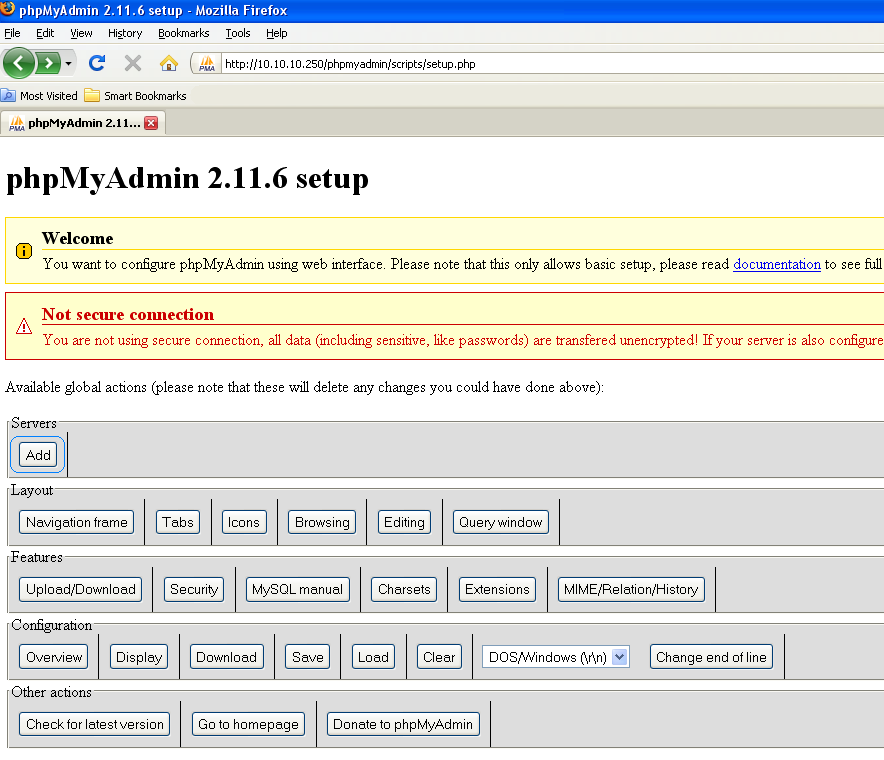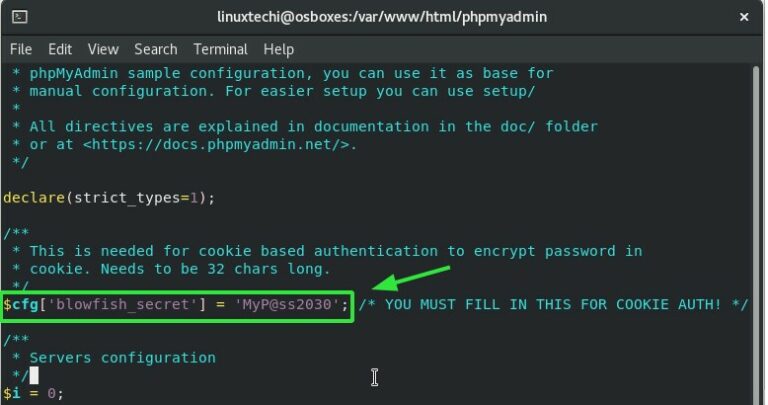

Enter the newly-defined admin username and password. Use the space bar to select apache2, press Tab to select Ok, and then press Enter. Finally, restart Apache: systemctl restart httpd Access phpMyAdmin with Updated CredentialsĢ. Just underneath the line labeled AddDefaultCharset UTF-8, add the following lines: Options +FollowSymLinks +Multiviews +IndexesĦ. htpasswd by editing /etc/httpd/conf.d/nf as follows: nano /etc/httpd/conf.d/nfĤ. Do so, and make a note of the password.ģ. You are prompted to enter and confirm an admin password. In a terminal window, enter the following: mkdir /etc/phpmyadmin htpasswd –c /etc/phpmyadmin/.htpasswd adminĢ. If you have multiple systems to allow, add a line for each IP address. Note: Replace your_system's_ip_address with the system’s actual IP address. Replace these lines with the following: Require ip your_system's_ip_address Find the following sections: Require all grantedģ. Open the nf file in a text editor (we will be using nano): sudo nano /etc/httpd/conf.d/nfĢ. Allow phpMyAdmin Only From a Specific IP Addressġ. This section will help you prevent unauthorized access to sensitive databases. You should now have a working phpMyAdmin utility. Step 5: Restrict Unauthorized Access to phpMyAdmin (Optional) Whether to enable SSL for the connection between phpMyAdmin and the MySQL server. Refresh the web browser phpMyAdmin page, and log in with your MySQL username and password. In libraries/, there is only one section for server.

#Phpmyadmin config password
Replace password with the actual password you set when securing the MySQL installation.Ĥ. To bypass this measure, open the MySQL shell and alter the root user: mysql –u root –pĪLTER USER IDENTIFIED WITH myswl_native_password BY 'password' ģ. PhpMyAdmin has not been updated yet to use this authentication method.Ģ. This error occurs because MySQL 8.x upgraded the password authentication mechanism. "The server requested an authentication method unknown to the client." However, if you attempt to log in, an error message may appear: The browser should display the phpMyAdmin login page. if we would put a > - line here to create him too many users might just use this script and end > - up with having the same password for the controluser. Open a web browser, and navigate to the following URL: localhost/phpmyadmin Finally, restart the Apache service to apply the changes made in the configuration file: systemctl restart httpdġ. Save the file ( Ctrl+o) and exit ( Ctrl+x).Ĥ. Enter the following code: Alias /phpmyadmin /usr/share/phpmyadminģ. This creates a new, blank configuration file. Create an Apache configuration file: sudo nano /etc/httpd/conf.d/nfĢ. php with the various user defined settings in it, and then linking it into the container using -v /some/local/directory/:/etc/phpmyadmin/. Next, create and set permissions on a temporary phpMyAdmin directory: mkdir /usr/share/phpmyadmin/tmp chown -R apache:apache /usr/share/phpmyadmin chmod 777 /usr/share/phpmyadmin/tmp Step 2: Configure Apache for phpMyAdminġ.

#Phpmyadmin config how to
Save the file ( Ctrl+o) and close ( Ctrl+x).ġ0. Detailed information about how to use the exploit/unix/webapp/phpmyadminconfig metasploit module (PhpMyAdmin Config File Code Injection) with examples and.


 0 kommentar(er)
0 kommentar(er)
